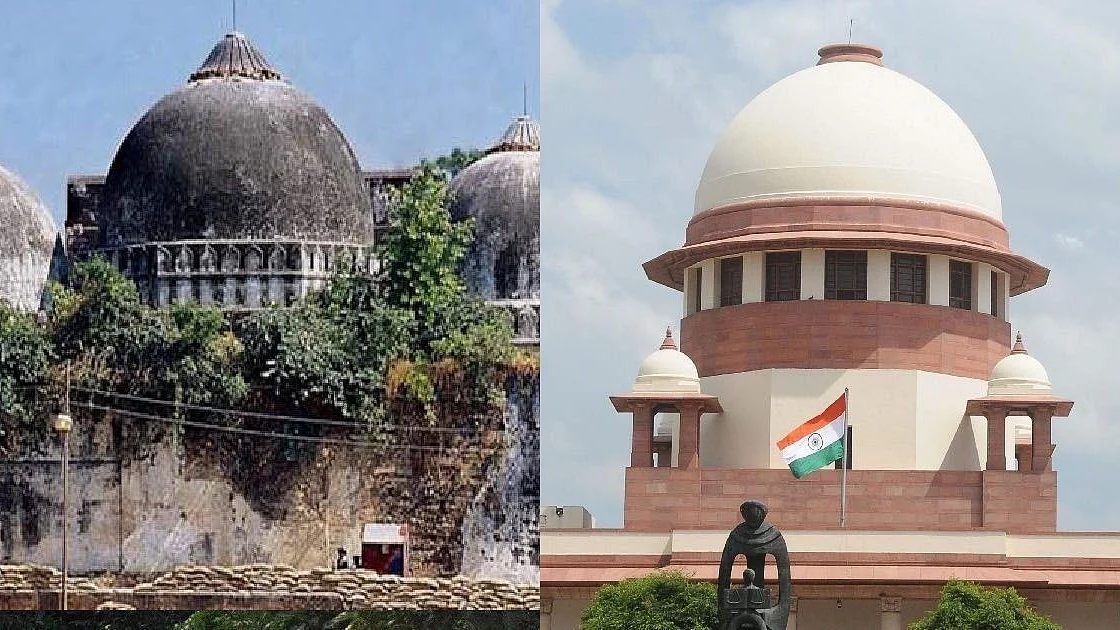Ayodhya waits for ‘justice’: A recap of arguments made by lawyers in court
King Solomon was cited during the arguments. The King had settled the claim of two women over a baby by offering to cut the baby by half. The real mother had offered to forgo her claim.

The Supreme Court’s verdict in the Babri Masjid-Ram Janmabhoomi dispute is expected in a few hours. It will be announced by the five-judge Constitution bench comprising Chief Justice of India Ranjan Gogoi, Justice SA Bobde, Justice DY Chandrachud, Justice Ashok Bhushan and Justice S Abdul Nazeer.
The case in front of the Supreme Court is the appeal against the verdict by a three-judge bench of the Allahabad High Court in 2010. Justice Sibghat Ullah Khan, Justice Sudhir Agarwal and Justice Dharam Veer Sharma had split the disputed land equally in three ways. They had held that the three parties —Ram Lalla Virajman, Nirmohi Akhara and Uttar Pradesh Sunni Central Waqf Board — were to be in join possession of the disputed 2.77 acres of land in Ayodhya.
Here are their arguments before the Constitution bench:
Uttar Pradesh Sunni Waqf Board (Muslim Party):
Represented by Rajeev Dhawan, the Sunni Waqf Board and the other Muslim parties, argued that the 1885 suit cannot be agreed as settled law on the issue since it only dealt with a portion of land — the Chabutra on the outer courtyard and not the entire land.
They said the entire disputed land belonged to them as per the law, judgement of courts and records recognised by the British-era administration. They stated that they had possession of the area since 1528 when the mosque was built and the land was never claimed by Hindus till 1989.
“If they had possession, why was one dome of the Babri Masjid knocked down in the 1934 riots and trespassers installed the idols in 1949 if they already had the title,” senior advocate Rajeev Dhavan asked.
They argued that ASI reports cannot be accepted as evidence as there were inconsistencies in successive reports and statements made by ASI officials in depositions. Dhavan said the alleged existence of a temple in antiquity could not affect legal claims now. He argued that the existence of a Ram Mandir underground was nothing but a myth.
The Muslim parties insisted that placing of idols under the central dome was a planned, surreptitious attack.
The Waqf Board argued that the Nirmohi Akhara and the Board were original litigants over the property until a claim was made in 1989 on behalf of the deity Ramlalla Virajman as the sole and exclusive owner of the site. Additionally, the Board argued against the Nirmohi Akhara’s claim for title on the ground that shebait rights cannot transfer to ownership.
The Muslim side said they have only sought title over the disputed area and not the land acquired by the government, and that it would allow Hindus to worship in the outer courtyard.
They argued that the destroyed structure had been a mosque since the day it was constructed. They argued that even after the riots of 1934, namaz was offered and the Babri Masjid had an imam who led the prayers and a muezzin who recited the azaan.
Nirmohi Akhara
The Akhara’s case rests on adverse possession, which means its possession of the area under dispute and its conduct of holding prayers since 1934. Through their lawyer Sushil Kumar Jain, they argued that their long-running shebaitship was not affected by not having the possession of the land.
They also argued against the inclusion of Ram Lalla Virajman in the case as both the Hindu parties are staking claim to the same land. “There are Supreme Court judgements which say that possession of temple endowment can be given only to the manager and not to the next friend of the deity,” Jain claimed.
Ram Lalla Virajman and Ram Janmasthan
The deity, which was represented by K Parasaran and CS Vaidyanathan used sketchy historical records to argue that there had been a temple under the mosque since the second century. They also relied on reports of the Archaeological Survey of India (ASI), who had submitted a report that Babri Masjid was on land on which stood a “massive structure”.
Most of their arguments were faith-based rather than reason and law-based. They contended that this was the site of the Hindu temple based on “unshakeable faith” of Hindus that Lord Ram was born in Ayodhya.
The Hindu side argued that the structure was not a valid mosque according to the tenets of Islam as Devanagari inscriptions were found on the pillars of the mosque, according to the disputed ASI report.
Though several questions were put to senior advocate CS Vaidyanathan to prove that the mosque was built over a temple, he couldn’t do so and went on to say that this was a matter of faith.
They sought declaration of title of not only the 2.77 acres of disputed land but also the adjoining land acquired by the government.
Lawyers appearing on behalf of the deity argued that the Nirmohi Akhara had “disentitled itself” and said that the disputed site belonged exclusively to the deity.
Parasaran argued that there can neither be joint possession nor joint title of the disputed site which is held sacred by the Hindus.
He narrated the story of King Solomon, who settled a dispute between two mothers by seeking to cut the baby into two halves so that each woman could have a piece. The real mother pleaded with him not to do so, which revealed to Solomon where the truth lay.
Follow us on: Facebook, Twitter, Google News, Instagram
Join our official telegram channel (@nationalherald) and stay updated with the latest headlines
